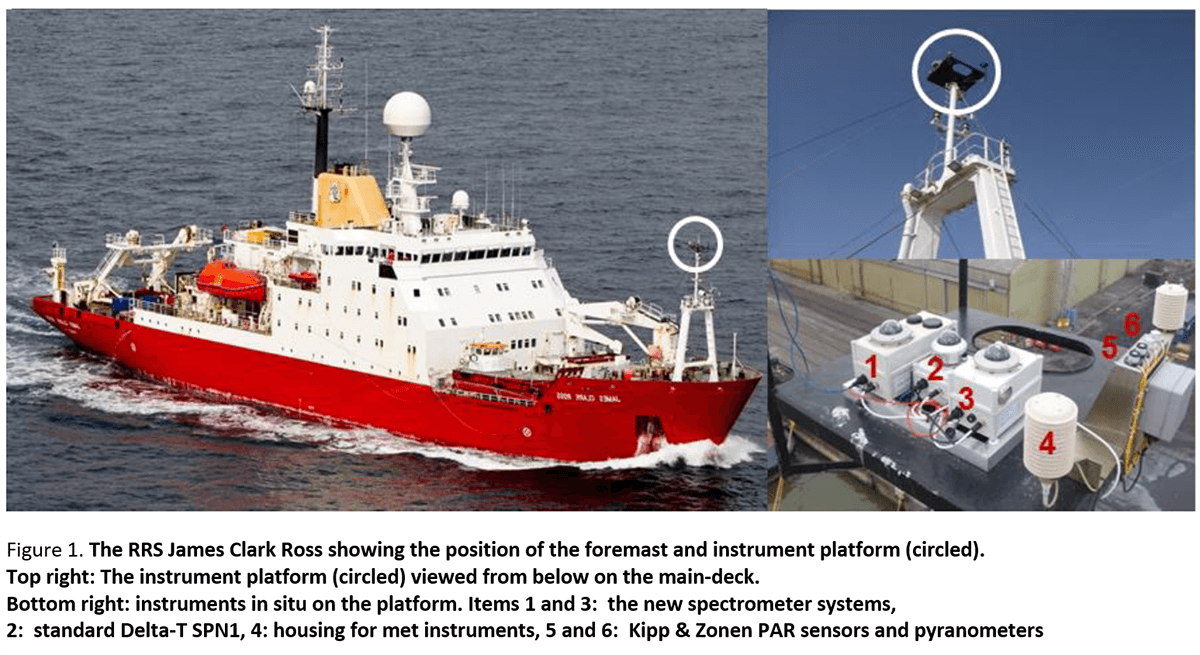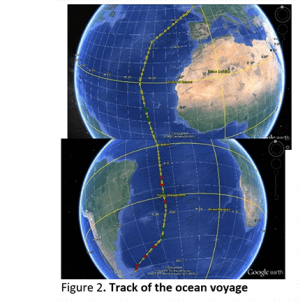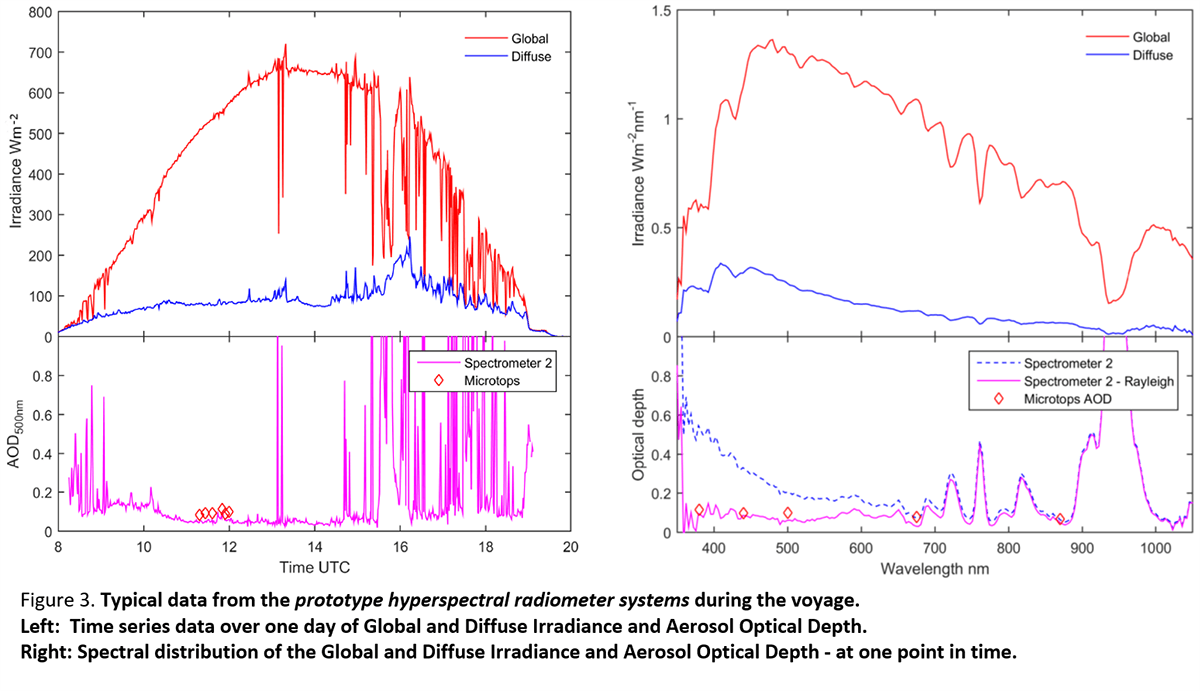Marine AOD measurements matter because aerosols can affect respiratory health, climate change, and the safety of aircraft during volcanic events. However, routine marine Aerosol Optical Depth (AOD) surface-based observations are in short supply because it is both difficult and expensive to operate conventional automatic sun photometers at sea.
Two prototype hyperspectral radiometers have shown that Global and Diffuse irradiance and AOD can successfully be measured autonomously in inhospitable and remote marine environments. The radiometers are based on the Delta-T Devices SPN1 Sunshine Pyranometer, which has no moving parts, shade rings or motorised tracking.


These prototypes, developed and built by the SPN1 inventor John Wood, were tested by Tim Smyth of Plymouth Marine Laboratory in a sea trial which sailed between the UK and the Falkland Islands in October 2014.
Following this expedition they were tested on land in Valencia, Spain for a period of 18 months against a reference AERONET sun photometer by Victor Estelles of the Department of Physics and Thermodynamics at the University of Valencia.

Corrections for the Field of View and the ship’s motion (derived from GPS sensors) were successfully developed and applied to the marine trials data, giving AOD values which compared well with a hand-held Microtops II sun photometer which was also used on the voyage.
Analysis of the subsequent data obtained in Valencia – after transferring the reference CIMEL sun photometer calibration across, and applying corrections for the Field of View differences and Rayleigh scattering, gave an RMSE AOD error 0.02 – 0.03 compared to the CIMEL. This accuracy is consistent with that obtained from well-calibrated field (i.e. secondary standard) tracking sun photometers.

